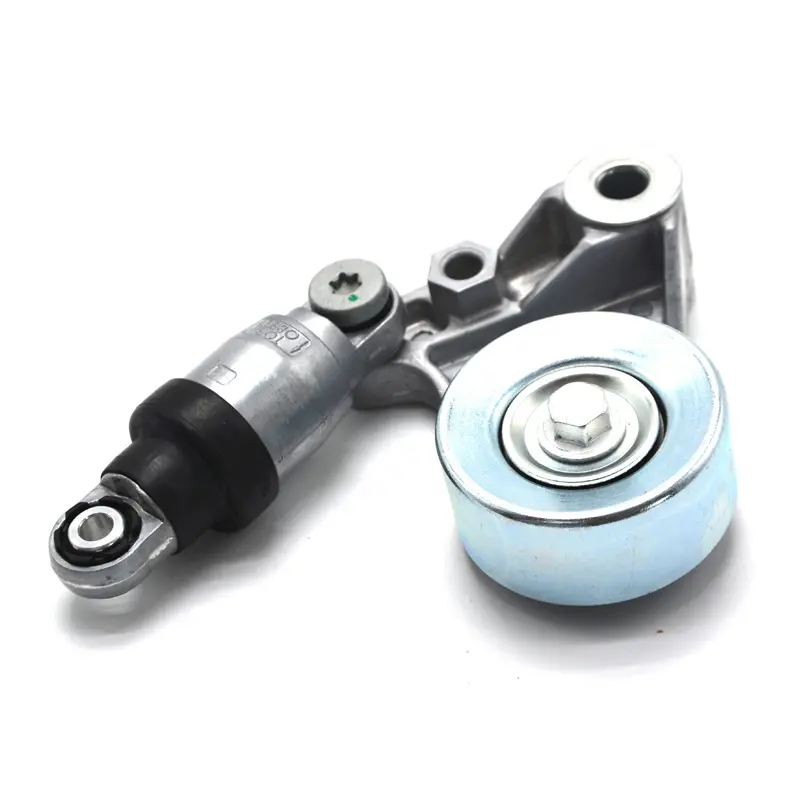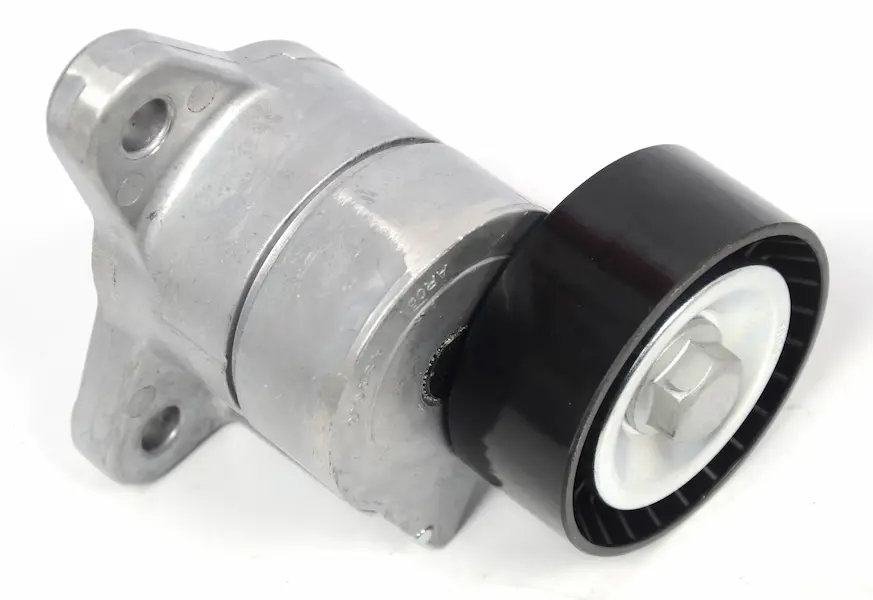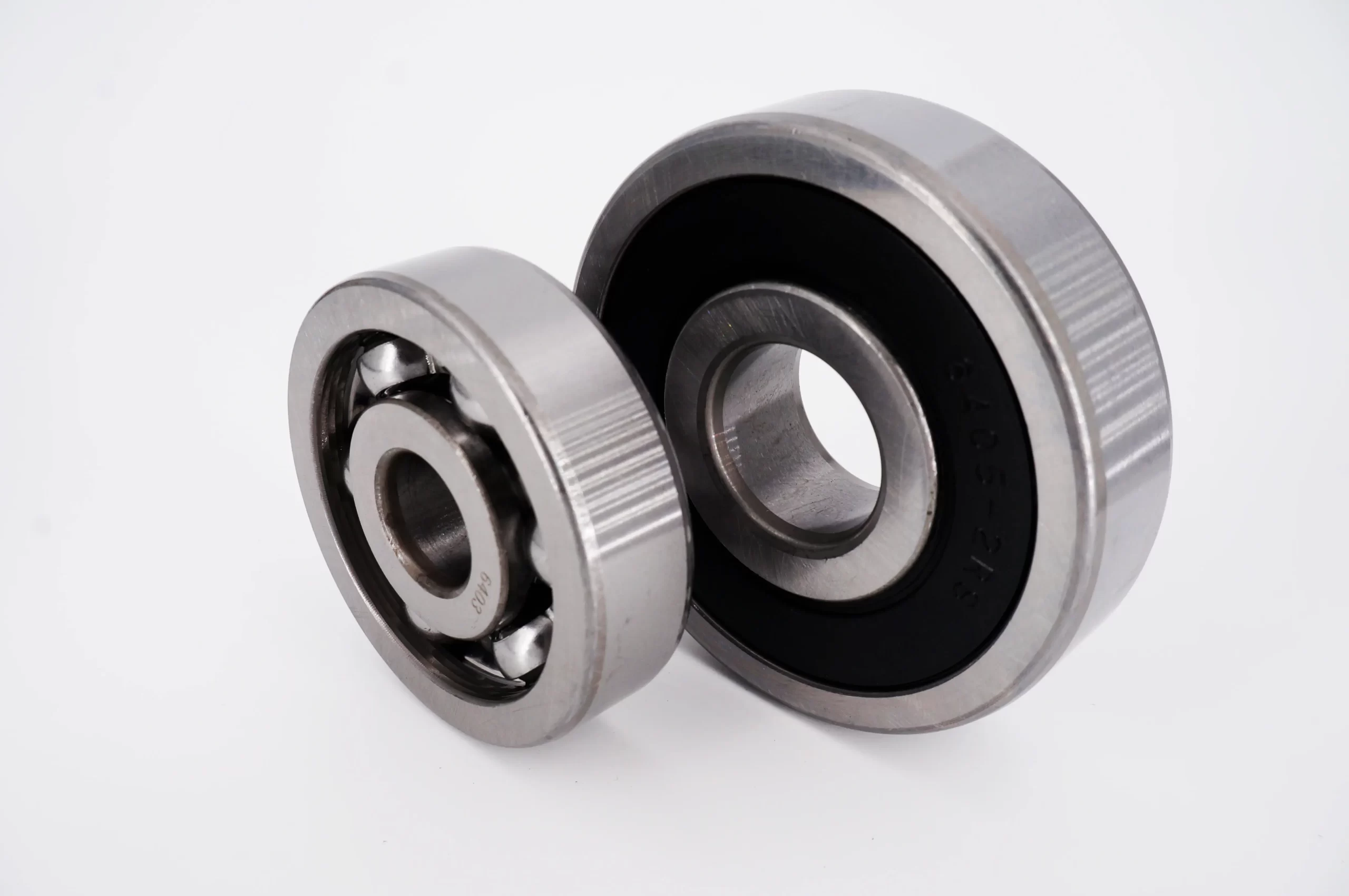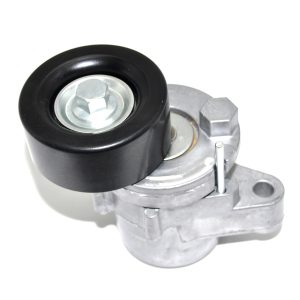Ievads
Spriegotāja un veltņa trīši ir neatņemama jebkura automobiļa dzinēja papildu siksnas piedziņas sistēmas sastāvdaļa. Tām ir izšķiroša nozīme, lai uzturētu pareizu siksnu spriegojumu un izlīdzinājumu, nodrošinot dažādu dzinēja piederumu, piemēram, alternatora, stūres pastiprinātāja sūkņa un gaisa kondicionēšanas kompresora, efektīvu darbību. Neraugoties uz šo skriemeļu nozīmīgumu, tie bieži tiek ignorēti ikdienas tehniskās apkopes laikā, kas izraisa priekšlaicīgu nodilumu, siksnas slīdēšanu un pat katastrofālu dzinēja bojājumu.
Šajā rakstā ir aplūkots, cik svarīga ir spriegotāju un tukšgaitas skriemeļu apkope, sniegti sīki izstrādāti norādījumi par to, kā tos pārbaudīt, uzturēt un nomainīt, kā arī uzsvērtas iespējamās sekas, ja šīs sastāvdaļas tiek atstātas novārtā. Izprotot spriegotāju un tukšgaitas skriemeļu nozīmi un apkopi, autobūves profesionāļi un entuziasti var ievērojami paildzināt savu transportlīdzekļu kalpošanas laiku un izvairīties no dārgiem remontiem.
Izpratne par spriegotāja un veltņa skriemeļiem
Pirms pievērsties tehniskās apkopes praksei, ir svarīgi saprast, kāda ir spriegotāja un tukšgaitas skriemeļu funkcija dzinējā.
- Spriegotāja skriemelis: Spriegotāja trīse ir paredzēta, lai pareizi nospriegotu serpentīna siksnu, nodrošinot, ka tā ir saspriegota un saskaras ar visiem motora piederumu trīšiem. Šis skriemelis ir uzmontēts uz atsperes pievelkama stieņa, kas laika gaitā, siksnai stiepjoties, automātiski pielāgojas, saglabājot nemainīgu spriegojumu.
- Kustības rullītis: Savukārt tukšgaitas skriemelis kalpo kā serpentīna siksnas vadotne, palīdzot to virzīt ap dažādām dzinēja sastāvdaļām. Atšķirībā no spriegotāja trīša, tukšgaitas trīši neregulē spriegojumu; to galvenā funkcija ir nodrošināt papildu saskares punktus siksnai, lai tā paliktu savā vietā un darbotos vienmērīgi.
Abi skriemeļi ir pakļauti pastāvīgam nodilumam, jo tie nepārtraukti darbojas lielā slodzē un temperatūrā. Tāpēc, lai novērstu bojājumus, kas var izraisīt nopietnas dzinēja problēmas, ļoti svarīga ir regulāra pārbaude un apkope.
Spriegotāja un trīšu skriemeļa problēmu pazīmes
Pirmais solis efektīvas tehniskās apkopes veikšanā ir atpazīt spriegotāja vai tukšgaitas rullīša bojājuma pazīmes. Biežāk sastopamie simptomi ir šādi:
- Neparasts troksnis: Viena no acīmredzamākajām skriemeļa problēmas pazīmēm ir neparasti trokšņi no motora nodalījuma. Dzirkstelēšana, sasmalcināšana vai grabēšana bieži norāda, ka trīšu gultņi ir nolietoti vai bojāti.
- Jostas nodilums: Pārmērīgs vai nevienmērīgs siksnas nodilums var liecināt par to, ka spriegotājs vai tukšgaitas siksna nedarbojas pareizi. Ja siksna izskatās saplaisājusi, saplaisājusi vai stiklota, tas var būt saistīts ar nepareizu spriegojumu vai nepareizu izlīdzinājumu, ko izraisījis bojāts trīši.
- Siksnas slīdēšana: Ja serpentīna siksna izslīd no trīšiem vai nespēj uzturēt pienācīgu kontaktu, iespējams, spriegotāja trīši nenodrošina pietiekamu spriegojumu. Tas var izraisīt dzinēja piederumu jaudas zudumu un iespējamu siksnas bojājumu.
- Dzinēja piederumu darbības traucējumi: Slikts spriegotājs vai tukšgaitas siksna var izraisīt to, ka serpentīna siksna zaudē saikni ar motora piederumiem, kā rezultātā var rasties traucējumi tādu komponentu darbībā kā alternators, stūres pastiprinātāja sūknis vai gaisa kondicionēšanas kompresors.
- Redzams skriemeļa nodilums: Fiziski pārbaudot trīšus, var atklāties redzamas nodiluma pazīmes, piemēram, rievas, plaisas vai deformācijas. Tie ir skaidri rādītāji, ka trīši ir jānomaina.
Spriegotāja un trīšu skriemeļu apkopes prakse
Lai nodrošinātu spriegotāju un tukšgaitas skriemeļu ilgmūžību un pareizu darbību, ir nepieciešama regulāra apkope. Turpmāk ir aprakstīti galvenie šo komponentu apkopes posmi:
1. Regulāra pārbaude
Spriegotāja un tukšgaitas rullīšu regulāra pārbaude ir jāiekļauj katra dzinēja tehniskās apkopes grafikā. Ieteicams pārbaudīt šos trīšus katru reizi, kad tiek nomainīta serpentīna siksna, vai arī ikreiz, kad parādās ar siksnu saistītas problēmas.
- Vizuālā pārbaude: Meklējiet, vai uz skriemeļiem nav redzamas redzamas nodiluma vai bojājumu pazīmes, piemēram, plaisas, rievas vai pārmērīga brīvkustība. Pārbaudiet arī serpentīna siksnas stāvokli, jo tā var sniegt norādes par skriemeļu stāvokli.
- Trokšņa pārbaude: Dzinēja darbības laikā ieklausieties, vai no trīšiem nerodas neparasti trokšņi. Dzirkstēšana vai slīpēšana bieži norāda uz nolietotiem gultņiem.
- Sprieguma tests: Spriegotāja trīšu gadījumā pārbaudiet serpentīna siksnas spriegojumu. Pārāk vaļīga vai pārāk saspringta siksna var liecināt, ka spriegotājs nedarbojas pareizi.
2. Eļļošana
Lai gan lielākajai daļai moderno spriegotāju un tukšgaitas skriemeļu ir hermētiski noslēgti gultņi, kurus nav nepieciešams eļļot, vecākiem modeļiem var būt lietderīga periodiska eļļošana, lai samazinātu berzi un novērstu priekšlaicīgu nodilumu. Vienmēr skatiet ražotāja norādījumus par konkrētām eļļošanas prasībām.
3. Siksnas nomaiņa
Zvejas zobrata siksna jānomaina saskaņā ar ražotāja ieteikto intervālu, parasti ik pēc 60 000 līdz 100 000 jūdzēm. Nomainot siksnu, ir ieteicams pārbaudīt un, ja nepieciešams, nomainīt arī spriegotāju un tukšgaitas rullīti. Nodilusi siksna var radīt papildu slodzi šiem trīšiem, paātrinot to nolietošanos.
4. Rullīšu nomaiņa
Spriegotāja un veltņa trīši jānomaina, ja tiem ir jebkādas nodiluma, bojājumu vai darbības traucējumu pazīmes. Ir svarīgi izmantot augstas kvalitātes rezerves daļas, kas atbilst vai pārsniedz ražotāja specifikācijas. Sliktākas kvalitātes trīši var nenodrošināt nepieciešamo spriegojumu vai izturību, izraisot priekšlaicīgu bojājumu.
- Spriegotāja trīšu nomaiņa: Lai nomainītu spriegotāja trīsi, vispirms noņemiet serpentīna siksnas spriegojumu, pagriežot spriegotāja roku. Noņemiet veco trīsi un uzstādiet jauno, pārliecinoties, ka tā ir pareizi izlīdzināta. Atkārtoti uzspiediet siksnu un pārbaudiet, vai tā ir pareizi noregulēta.
- Tītara skriemeļa nomaiņa: Spriegotāja skriemeļa nomaiņa ir līdzīga spriegotāja skriemeļa nomaiņai. Vienkārši noņemiet veco trīsi un uzstādiet jauno, pārliecinoties, ka tā ir droši piestiprināta un pareizi saskaņota ar siksnu.
5. Izlīdzināšanas pārbaude
Lai motora palīgdzinēja piedziņas sistēma darbotos efektīvi, ļoti svarīga ir pareiza serpentīna siksnas izlīdzināšana. Nepareiza izlīdzināšana var izraisīt pārmērīgu siksnas un trīšu nodilumu, kas var izraisīt priekšlaicīgu bojājumu.
- Saskaņošanas rīki: Lai pārbaudītu serpentīna siksnas izlīdzināšanu, ir pieejami īpaši instrumenti. Šie instrumenti var palīdzēt noteikt jebkādas neatbilstības un nodrošināt, ka trīši ir pareizi novietoti.
- Nesaskaņotības labošana: Ja tiek konstatēta neatbilstība, var būt nepieciešams noregulēt skriemeļu novietojumu vai nomainīt nolietotās detaļas, kas izraisa neatbilstību.
6. Veiktspējas uzraudzība
Pēc spriegotāja un tukšgaitas skriemeļu nomaiņas vai apkopes ir svarīgi uzraudzīt motora palīgdzinēja piedziņas sistēmas darbību. Pievērsiet uzmanību jebkādiem neparastiem trokšņiem, siksnas nodilumam vai palīgierīces darbības traucējumiem, jo tie var liecināt par pamatproblēmām, kas jārisina.
Treniņu apkopes nolaidības sekas
Ja netiek veikta pareiza spriegotāja un tukšgaitas skriemeļu apkope, var rasties vairākas problēmas, tostarp:
- Drošības jostas atteice: Bojāts skriemelis var izraisīt serpentīna siksnas izslīdēšanu, nodilšanu vai pārrāvumu, kā rezultātā tiek zaudēta jauda svarīgākajiem motora piederumiem.
- Palīgierīču darbības traucējumi: Nodilusi vai bojāta siksna var izraisīt siksnas saskares zudumu ar dzinēja piederumiem, kā rezultātā var traucēt tādu svarīgu komponentu kā alternatora, stūres pastiprinātāja sūkņa vai gaisa kondicionēšanas kompresora darbību.
- Dzinēja pārkaršana: Atsevišķos gadījumos bojāts skriemelis var izraisīt ūdens sūkņa darbības pārtraukšanu, kā rezultātā motors pārkarst un var tikt bojāts.
- Palielinātas remonta izmaksas: Rullīšu tehniskās apkopes nolaidība var novest pie plašākiem un dārgākiem remontdarbiem, tostarp visas palīgdzinēja piedziņas sistēmas nomaiņas vai pat dzinēja bojājumiem.
Secinājums
Spriegotāja un tukšgaitas skriemeļi var būt nelieli komponenti, taču to nozīmi motora palīgdzinēja piedziņas sistēmas efektīvā darbībā nevar pārvērtēt. Šo trīšu regulāra pārbaude, apkope un savlaicīga nomaiņa ir būtiska, lai nodrošinātu serpentīna siksnas ilgmūžību un motora piederumu pareizu darbību.
Ievērojot šajā rakstā aprakstīto tehniskās apkopes praksi, automobiļu profesionāļi un entuziasti var izvairīties no biežāk sastopamajām ķibelēm, kas saistītas ar skriemeļu atteici, samazināt dārgu remontu risku un saglabāt savu transportlīdzekli nevainojamā darbībā. Atcerieties, ka labi uzturēta skriemeļu sistēma ne tikai uzlabo dzinēja veiktspēju, bet arī veicina vispārējo transportlīdzekļa uzticamību un drošību.




